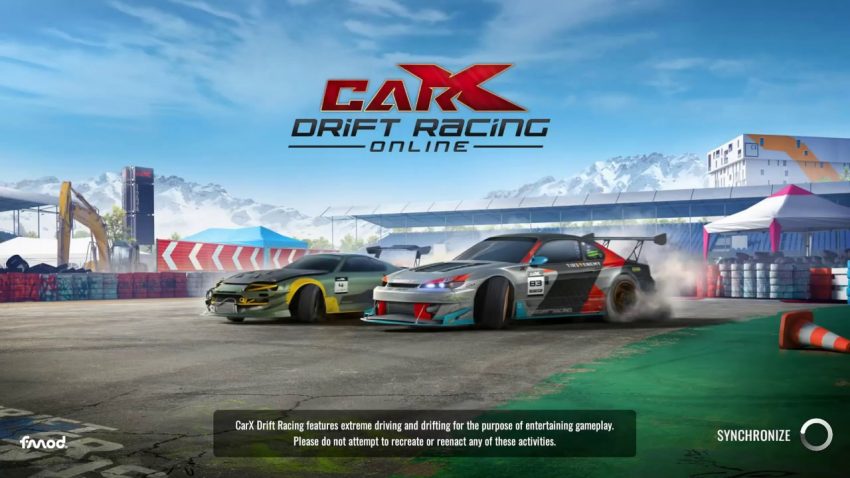Ever wondered, how nice would it feel to consistently hit 70⁰-80⁰ on ANY car you like without them fancy steering wheels?
This comprehensive guide will help you do just that. ^_^
Who is this guide for?
- You’re new to the game, or
- You have little knowledge about tuning and just want to have fun drifting, or
- You find yourself consistently tanking hours into tuning a new car, or
- You’re struggling with keyboard drifting, or
- Your car seems to be constantly spinning-out for no particular reason
I’ll try to address all of these scenarios in this guide by providing a single, universal tune guide for all cars in the game.
In this guide I’ll be explaining very basic concepts, so if you’ve pumped hundreds of hours into the game or just already know your way around tuning cars – this guide is not for you and will probably feel boring or uninformative.
What? One tune for all cars?
That’s the process:
– You start with this guide, set up your new car
– Now you already have a car that is comfortable to drift and set some high-scores on tracks
– You’re free to experiment with the parameters yourself, to see what’s best for you!
So, without further-a-do, let’s jump into it!
I’ll be using the “Ultimate” setup for all examples, as it is the most tunable one.
Step one: suspension
These guys are the basics.
For now, let’s just set
– Ackerman to 0%
– Steering angle to the maximum value available for your car (generally, 56-60 degrees)
I’ll tell more about the reasons later.
Camber and Caster are complementary to each other – the second needs to “match” the value of the first so the outer front wheel is in the full contact with the ground when turned:
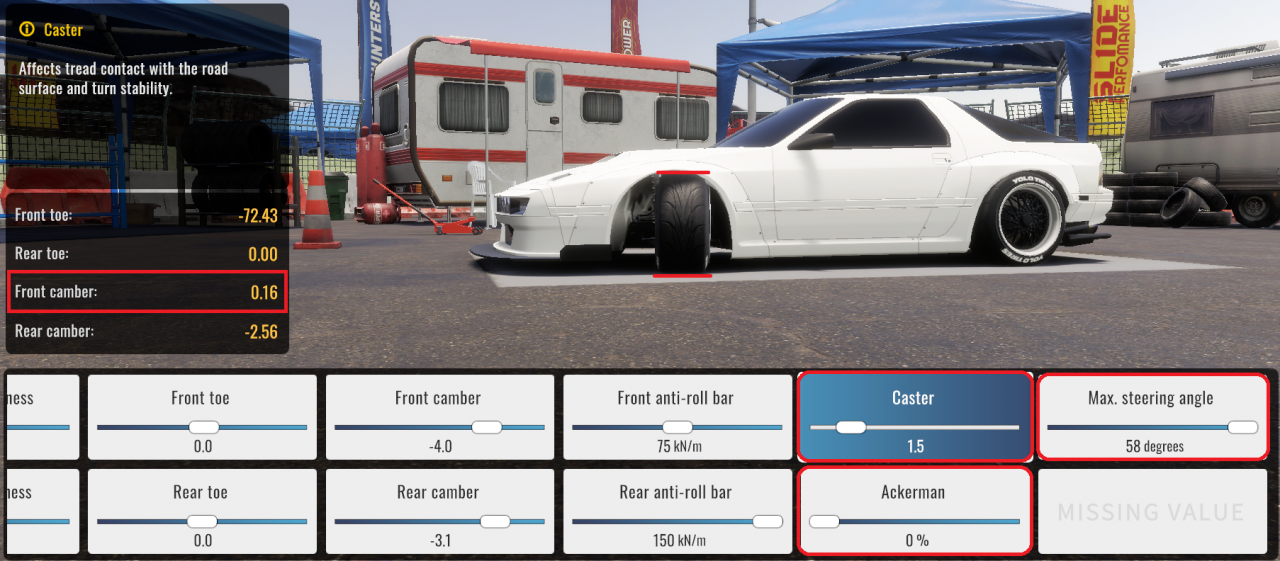
For our purposes, Camber is mostly for style: you can have as much or as little as you like, as long as Caster is set correctly (like in the image above).
Place the camera to the left of the car (as in the image above), start tuning caster and pay attention to the “front camber” value: it should be from 0 to 1.
Tip: Higher camber values (1-4) here will give the car a more “bouncy” feeling, when reaching the maximum angle – the car will actively push back to a lower drift angle. This will make drifting more forgiving to your errors, as the car will stabilise itself. Even higher camber values will most probably just make it spin-out even more.
These are mostly for the ride feel: if the back ones are soft, the car will feel heavier and more “lazy”; if the back ones are much stiffer than the front ones – the car will feel more agile and alive.
There are many nuances to it, but this is a general rule-of-thumb.
Anti-roll bars can be used to fine-tune the behaviour, following the same basic rule.
I, personally, prefer the back ones to be almost at their max stiffness, while keeping the front ones’ values around the middle.
Simple: the lower the springs – the less inertia the car has when swinging from side to side.
For now that’s enough. 🙂
Keep your car low – 5-10 cm off the ground – and you’ll be ok.
Toe regulates how much your wheels “look” inward or outward.
Front toe is not really of any help to us, while any change (from 0) to rear toe will help the car push itself out of a very sharp angle (for example, when backward-drifting):
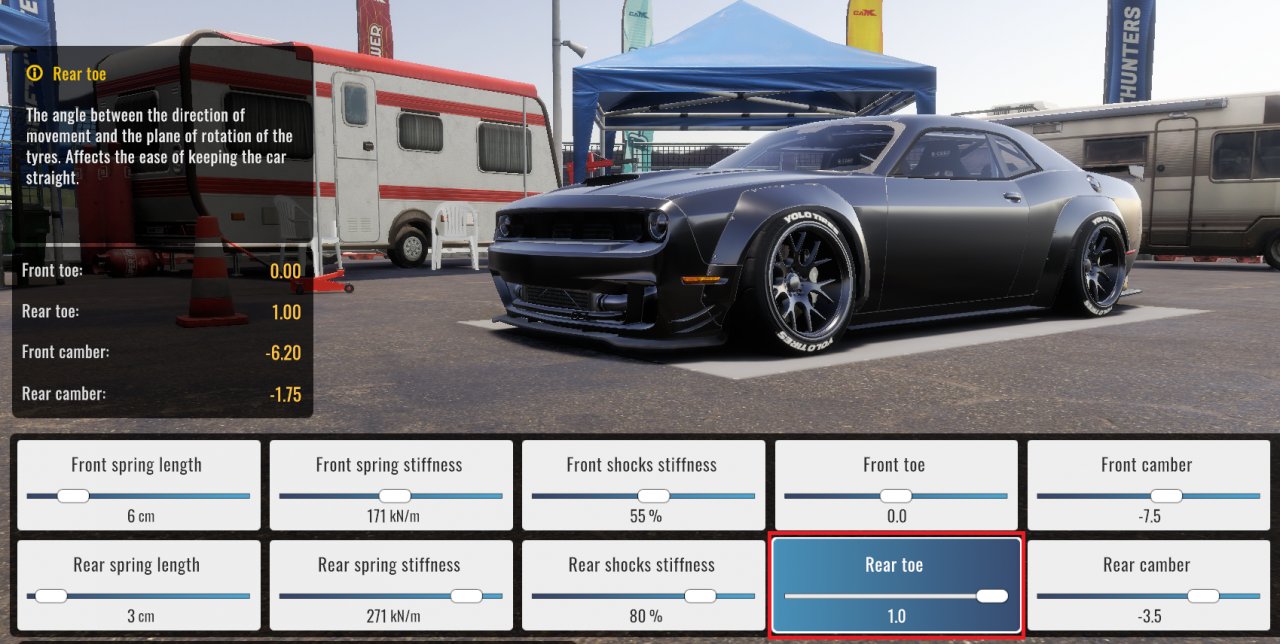 This car is notoriously long and heavy and very much not sharp and agile. Rear toe helps make it easier for this car to snap out of oversteer and prevent spin-out.
This car is notoriously long and heavy and very much not sharp and agile. Rear toe helps make it easier for this car to snap out of oversteer and prevent spin-out.
Step two: wheels
For now, our main goal is to maximize front wheel grip to make it easier to hold on to wider angles (like 70-80+ degrees). For this, we have to tune:
I generally make them as wide as possible for maximum wheel contact and looks. 🙂
Best grip is achieved by carefully lowering the width and testing for the individual car.
The same theme here as for springs and dampers: rear is more, front is less.
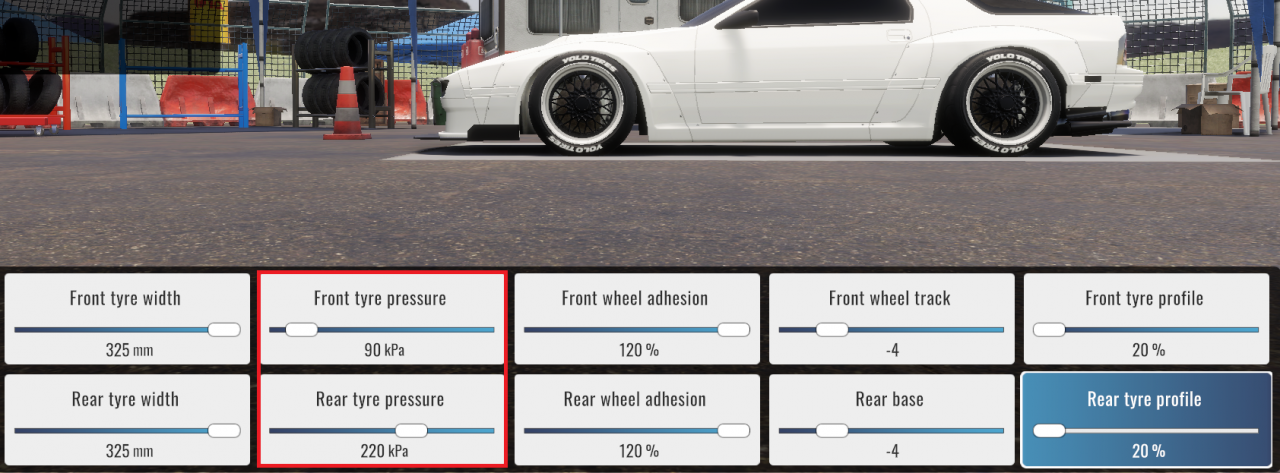 Low front tire pressure (70-120) increases friction dramatically, which is of huge help in getting them sweet-sweet wide angle drifties.
Low front tire pressure (70-120) increases friction dramatically, which is of huge help in getting them sweet-sweet wide angle drifties.
Increased friction on front tires makes it very easy to hold onto angles close to 85-90 degrees without sacrificing stability or risking spinning-out. The exact perfect value differs from car to car, so try setting 100kPa as the base value and then adjust.
As for the rear tires – set it high. With higher values comes less friction, which means easier change of direction… and easier spin-outs. So be careful.
Just set it as high as possible: front needs it for maximum grip, rear needs it to prevent spin-outs (and for faster launches).
Bigger wheels spin faster and require more power – that’s just how it works. Make’em too big – they spin too fast – you spin out constantly. Make’em too small – they spin slow – need higher gears to drift, less top speed.
Tire profile affects two things:
– how forgiving the wheel is to camber and tire pressure;
– how easy it is to overcome the initial friction (spin the wheel faster than it moves);
Higher profile helps with the former, lower profile helps with the latter.
I’m not a fan of huge camber, so I prefer lower profile just so my wheels are easier to spin.
Base track is mostly aesthetics.
Step three: engine
We will use RPM limit to set the top of the torque curve around the usual drifting RPM range, which is usually around the end. With this, the engine will always put out maximum torque, while you’re redlining your car through the track.
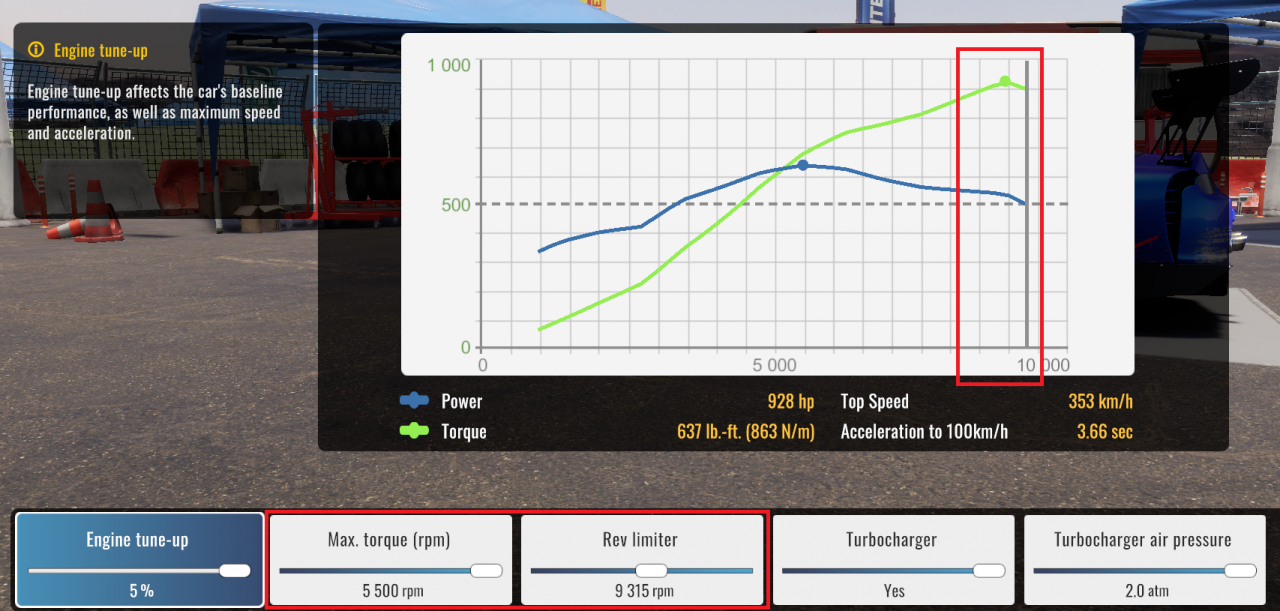
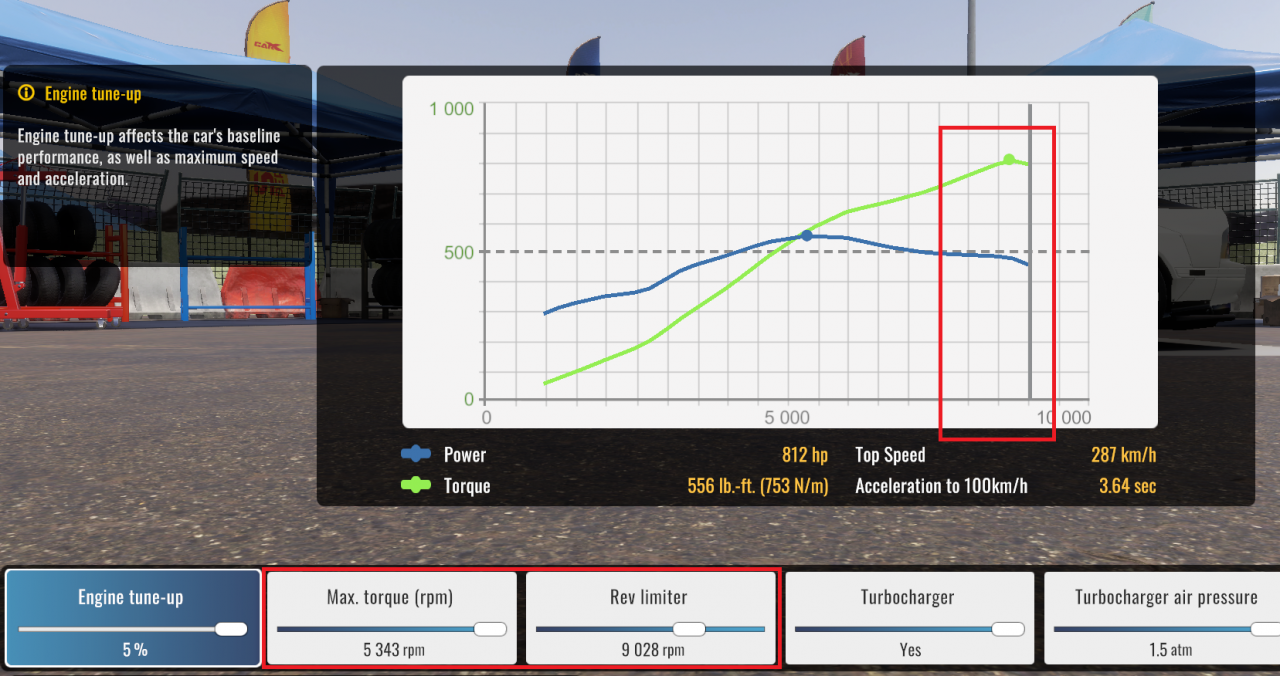

Note, however, to try to leave some wiggle-room for your throttle, just to be sure to always get that sweet power, even if you’ve let go the pedal for a bit.
Step four: transmission
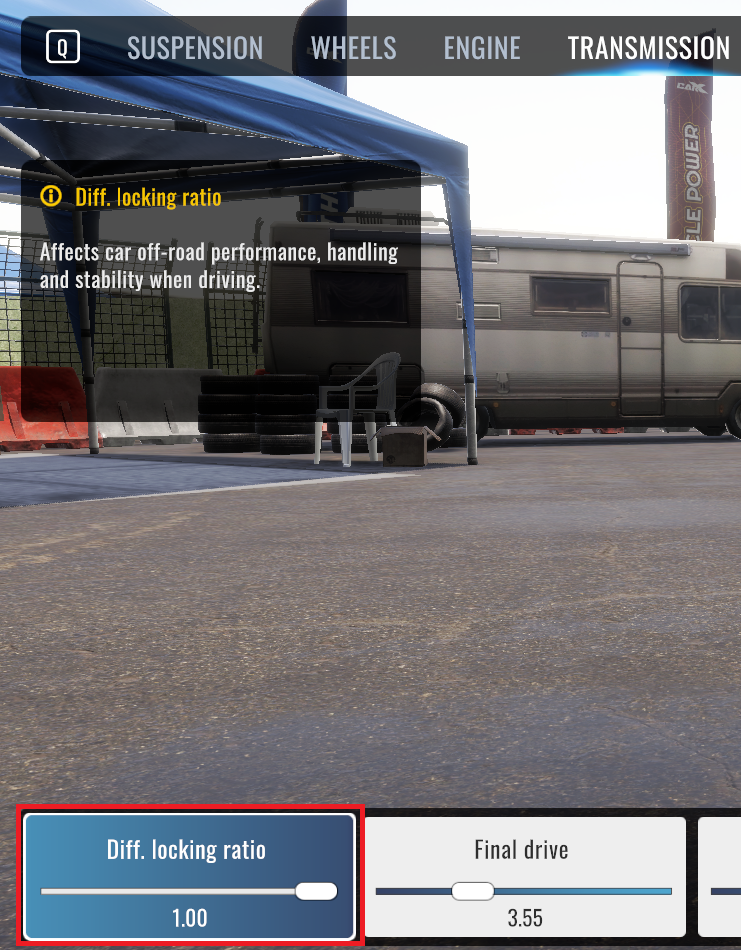 Not much to discuss here: it’s mostly preferential.
Not much to discuss here: it’s mostly preferential.I like to set the diff to full lock, just so that the car always sends itself drifting every turn.
Configuring the gear ratios is another story.
I’m gonna leave it to you or other guides, as it’s just too time-consuming to tune them for this guide’s sake.
I mostly leave them stock, and just try to use the ones that feel right for the current speed.
Using automatic or manual transmission doesn’t matter much with this tune either.
Step five: fine-tuning
But if something’s still off – I have several suggestions for you:
“But you said!!!”
For now, let’s just set
– Ackerman to 0%
And yes, yes, I know. This is just to give the car a sense of stability – with 0% ackerman its less likely to spin-out.
Let’s dive into the details.
Ackerman angle allows you to control the toe of the front wheels, but only when they’re turned:
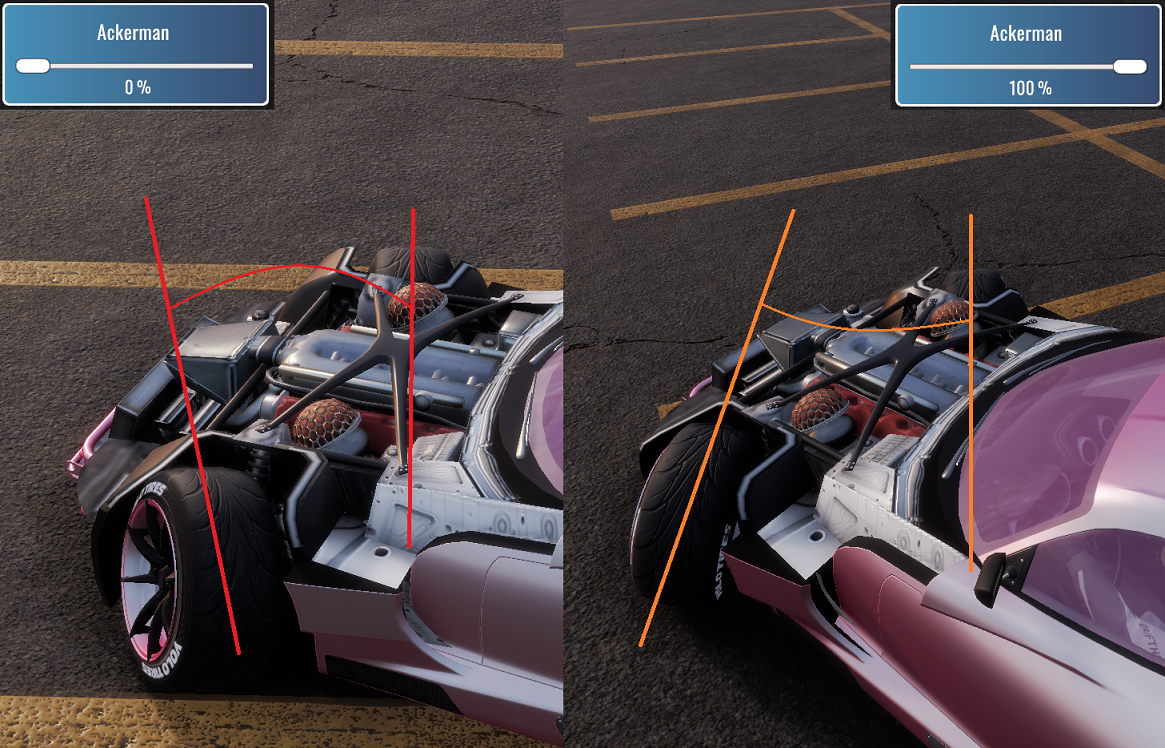
What 0% ackerman does is it makes the front inner wheel (left one, in the image above) look towards the turn’s center (or in other words – inside of the turn), while you drift.
This achieves one crucial thing: because this wheel turns forwards (just like the rest), it always fights with the process of spinning-out by pulling the inner side of the car (left side, when turning left; right side, when turning right) towards the inner side of the turn, effectively cancelling the whole spinning-out thing.
By increasing the percentage, the force of this pull inwards decreases, giving you more freedom and allowing for easier spin-outs and potentially wider drift angles.
If you want this freedom – try to balance the higher ackerman with a bit higher front tire pressure (120-180). This will increase the stability as you increase the ackerman percentage.
“But you said!!!”
Camber is mostly for style
Yep, you’ve caught me again. It’s not.
It’s the easiest way to control how much tire contacts the road at all times.
This control allows you to, again, balance how much the car tends to spin-out (oversteer) or slide-out (understeer) during drifting. More camber – more oversteer, basically.
I have this peculiar example with 20 degress of camber and 35% ackerman in my garage:
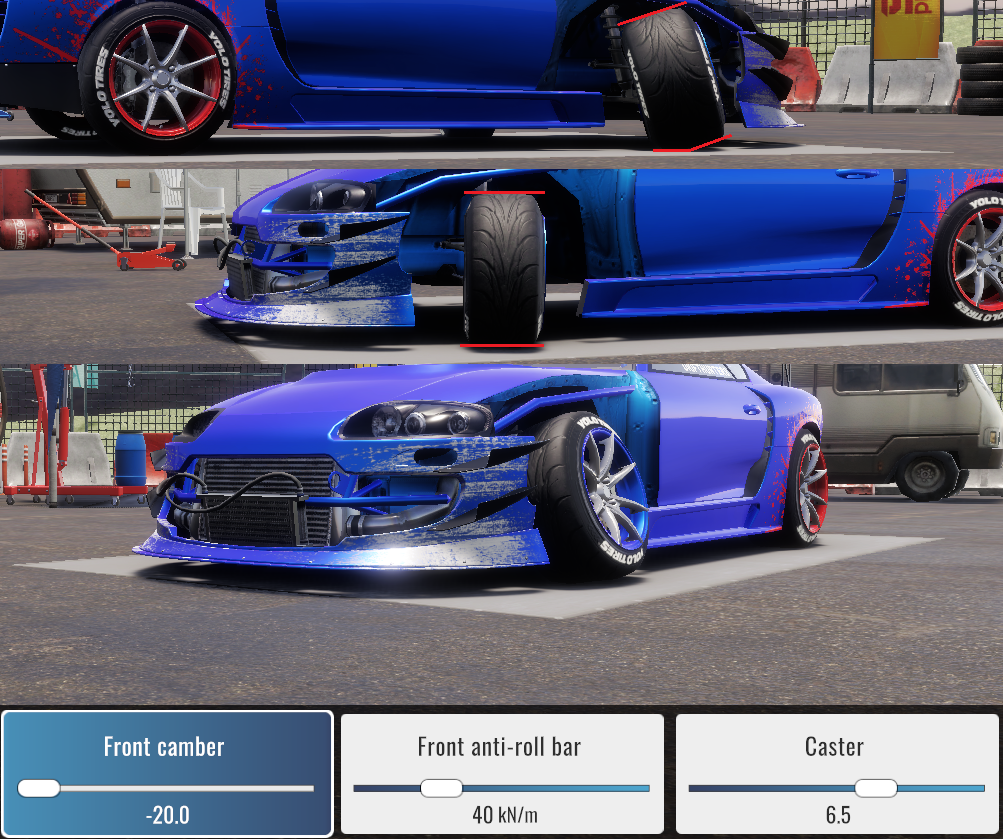 Horizontal red lines mark the area of contact with the road during turning. As you can see, the outer wheel has only half of its width used – this is to balance the softness of front suspension and that high inner-pulling force I talked about earlier.
Horizontal red lines mark the area of contact with the road during turning. As you can see, the outer wheel has only half of its width used – this is to balance the softness of front suspension and that high inner-pulling force I talked about earlier.
Summary (TLDR)
- Ackerman: 0%
- Maximum steering angle
- Stiff rear everything (springs, dampers, anti-roll bars…)
- Caster and Camber combined must give you a straight outer wheel and near-zero degrees of camber, when turning
- Low ride height (but not too low)
- Positive rear toe for more responsiveness at higher angles
- Widest tires
- Pressure: 70-120 in the front, 200-300 in the rear
- Adhesion – maximum %
- Tire profile – 20-30%
- Tire track base – mostly aesthetics
- Max-out engine, but keep the peak torque near the end of RPM range
- Gears don’t matter much
May come in handy, if quickly tuning a new car. 😉
